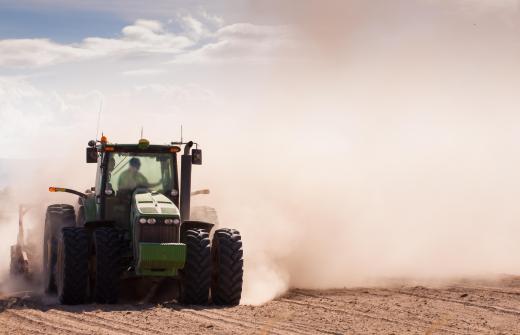The Farmall tractor was a dependable mainstay on American farms throughout the middle of the 20th century. Although Farmalls are no longer produced, fans of antique and vintage tractors have preserved numerous examples of Farmall tractor models in all their glory, and these tractors can be seen at parades, agricultural events, and tractor shows, usually with proud owners who are happy to take people for a spin around the block.
These tractors were developed by the International Harvest Company, a manufacturer of agricultural products which emerged in 1902 as the result of a merge of several companies. The company's first foray into the world of tractors occurred in response to early tractors produced by several rivals, including the John Deere Company and the Ford Motor Company. International Harvester's Farmall, later renamed the Farmall Regular, was released in 1924 and it proved to be a big hit.

The company was initially hesitant about the outlook for the Farmall tractor, fearing that it wouldn't be a big success. Earlier attempts at breaking into the tractor market had been expensive and troublesome, and while the Farmall design was innovative, the company feared that it wouldn't be readily adopted. As a result, Farmalls were first released in Texas only, with production later expanding in 1926 as demand for the new design's popularity exploded.
These tractors became so famous that International Harvester adopted “Farmall” to refer to its entire tractor line, capitalizing on brand recognition. The design was innovative because it allowed people to use the tractor with row crops, mechanizing processes which had formerly been done by hand or with a plow. This all purpose tractor quickly expanded into a line of tractors for various applications known as the “Letter Series” and released in 1939. From the A to the MD, the Farmall tractor letter series had a tractor for everyone, with a focus on small farms and affordability.
In 1952, the Letter Series turned into the Super Series, morphing again into the Number Series in 1955. By 1973, International Harvester had dropped the Farmall name, although Farmall tractor nameplates were affixed to some 1974 and 1975 tractors. In 1985, the company dropped its agricultural division altogether as part of a reorganizing effort, and in 1986, International Harvester was renamed the Navistar International Corporation, consigning the Farmall and International Harvester to the history books.
Working models of vintage Farmall tractors can be seen on some small farms, illustrating the durability of the design. Farmers also have a ready supply of replacement parts to draw upon, thanks to the profusion of Farmall models which were produced.
Ever since she began contributing to the site several years ago, Mary has embraced the exciting challenge of being a About Mechanics researcher and writer. Mary has a liberal arts degree from Goddard College and spends her free time reading, cooking, and exploring the great outdoors.

